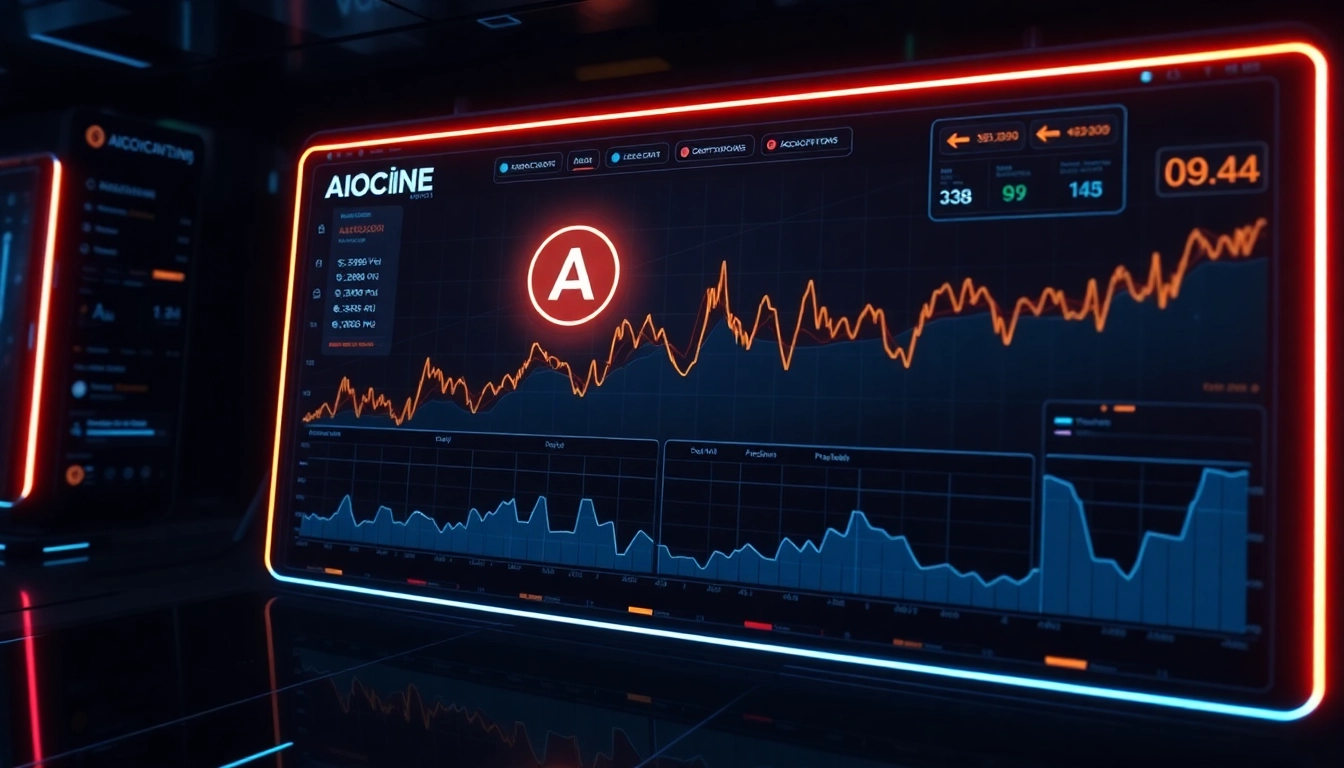
Introduction to Aerial Work Platforms Rental: Key Benefits and Uses
The demand for efficient, safe, and versatile access solutions has significantly increased across various industries. Aerial work platforms (AWPs) have become indispensable tools for tasks involving elevated work, from maintenance and construction to firefighting and event setup. Choosing to rent aerial work platforms offers numerous advantages over purchasing, including financial flexibility, access to the latest technology, and minimized maintenance burdens.
For professionals and companies operating within the UK, understanding the nuances of aerial work platforms rental is essential for maximizing productivity and safety on site. Whether you need a cherry picker for a day or a telescopic boom lift for several weeks, the right rental choice can streamline operations while keeping safety standards at the forefront. Explore the comprehensive insights below to make informed decisions about aerial work platform rental, tailored to your project’s needs.
To begin your journey toward optimal equipment selection and utilization, visit Aerial work platforms rental for a wide range of options, competitive pricing, and expert support.
Understanding Different Types of Aerial Platforms
The spectrum of aerial work platforms is diverse, each designed to address specific operational challenges. A clear understanding of these types is critical for selecting equipment that aligns with project requirements.
Scissor Lifts
Scissor lifts are vertical lifting platforms characterized by their accordion-like crisscrossing supports. They provide stable, platform-based access at a fixed height and are ideal for indoor applications such as electrical work, painting, or maintenance in confined spaces. Their straightforward operation makes them suitable for users with minimal training. Modern models often feature electric drives, making them eco-friendly and suitable for indoor, emission-sensitive environments.
Boom Lifts
Boom lifts, also known as cherry pickers or aerial lifts, offer increased versatility through articulated or telescopic booms. They can extend over obstacles, providing access to hard-to-reach areas. Boom lifts are classified into:
- Articulating Boom Lifts: Possess multiple hinged sections for multi-directional movement, excellent for navigating around structures.
- Telescopic Boom Lifts: Feature a straight, extendable arm for maximum outreach and height.
These machines are suitable for outdoor maintenance, construction tasks, and installation work where mobility and reach are critical.
Vertical Mast Lifts & Personnel Lifts
Designed for simpler tasks at moderate heights, vertical mast lifts are used predominantly indoors and feature a compact footprint. They are ideal for maintenance, stock replenishment, or installation at heights typically ranging from 3 to 10 meters.
Crawler and Spider Lifts
Equipped with tracks or spider-like legs, these lifts navigate rough terrain and confined spaces, making them suitable for outdoor construction sites, tree works, or industrial inspections.
Specialized Platforms
Include truck-mounted lifts, articulated telescopic models, and articulating boom lifts with work cages designed for specific trades, environmental conditions, or safety standards.
Common Industries That Rely on Aerial Platforms
Aerial work platforms are fundamental across a broad array of sectors, each leveraging their capabilities for efficiency, safety, and compliance.
Construction and Infrastructure
The construction sector widely employs AWPs for tasks such as installing windows, roofing, facade works, and structural inspections. The ability to reach high elevations with stability and safety makes AWPs indispensable on-site.
Maintenance, Electrical, and Mechanical
Maintenance crews use AWPs for electrical system repairs, HVAC installation, pipeworks, and building upkeep. Their mobility allows quick access across multiple floors or structures, reducing downtime.
Telecommunications and Utilities
Telecommunications companies rely on articulating boom lifts and cherry pickers for installing or repairing overhead cables, antennas, and infrastructure to ensure continuous connectivity.
Event Setup and Entertainment
Event organizers utilize AWPs for Rigging, lighting, and stage setup, especially for large outdoor events requiring elevated access with minimal disruption.
Fire and Rescue Services
Emergency services employ specialized platforms to reach stranded individuals or conduct rescues from heights, emphasizing the critical safety capabilities of modern AWPs.
Why Choose Rental Over Buying?
Deciding between renting or purchasing aerial work platforms hinges on multiple strategic considerations. For most businesses, rental offers compelling advantages that outweigh the costs of ownership.
Cost Efficiency
Rental eliminates large capital expenditures, allowing businesses to allocate funds more flexibly. Maintenance, storage, and depreciation costs are transferred to the rental provider, reducing overhead.
Access to the Latest Technology
Rental companies continually update their fleets with the newest models featuring enhanced safety features, eco-friendly engines, and improved performance, ensuring operators work with the best tools available.
Operational Flexibility
Renting allows for scaling equipment needs based on fluctuating project demands. Short-term, long-term, and multi-user arrangements accommodate diverse project timelines.
Minimized Maintenance and Storage Burdens
Rental providers bear the responsibility for inspections, repairs, and storage, freeing clients from these operational burdens and ensuring equipment is always in optimal condition.
Reduced Liability and Risk
Rental companies typically include insurance and support services, enabling clients to mitigate risks associated with equipment failure or safety compliance.
How to Select the Right Aerial Work Platform for Your Project
Assessing Height and Reach Requirements
The primary step in choosing an AWP is accurately determining the maximum working height and outreach needed. For example, if your task involves ceiling fixtures, a scissor lift with a reach of up to 10 meters may suffice. For façade work or tree trimming, an articulated boom lift extending beyond 20 meters might be necessary. Always include additional safety margin to accommodate unforeseen obstacles or movement.
Safety Features and Operational Considerations
Evaluate platforms for essential safety features such as emergency lowering, fall arrest systems, lock-out/tag-out controls, and stability sensors. Consider operational factors like terrain suitability—indoor, urban, or rough outdoor environments—and the platform’s mobility and ease of transport.
Budgeting and Rental Duration Strategies
Define your project timeline and usage pattern to optimize rental costs. Long-term rentals may benefit from discounted rates, while short-term needs should focus on hourly or daily rates. Discuss with rental providers about maintenance packages, training, and after-sales support, which can influence overall costs and safety outcomes.
Best Practices for Safe Operation and Maintenance
Operator Training and Certification
Properly trained and certified operators are paramount to safe AWPs utilization. This involves understanding operating controls, load limits, stabilizer use, and emergency procedures. Many UK rental companies provide or recommend formal training courses aligned with the LOLER (Lifting Operations and Lifting Equipment Regulations) standards.
Regular Inspection and Maintenance Routines
Daily pre-operation inspections should include checks for tire condition, hydraulic leaks, safety devices, and structural integrity. Scheduled professional maintenance ensures ongoing safety, prolongs equipment lifespan, and maintains compliance with safety standards.
Compliance with UK Safety Regulations
The use of AWPs in the UK must adhere to strict regulations, notably LOLER and PUWER (Provision and Use of Work Equipment Regulations). Maintaining detailed inspection records, conducting risk assessments, and ensuring operators are trained are legal requirements that underpin safe operations.
Top Tips for Cost-Effective Aerial Platforms Rental
Comparing Rental Providers and Quotes
Obtain multiple quotes considering not only rental rates but also included services such as delivery, setup, operator support, and safety checks. Comparing references and reviews helps ensure reputable service providers who prioritize safety and reliability.
Optimizing Equipment Use and Scheduling
Plan your project timeline meticulously to maximize equipment utilization. Group tasks geographically and schedule overlapping activities to reduce downtime. Consider multi-functional platforms that can handle different tasks, reducing the need for multiple machines.
Additional Services and Support for Smooth Operations
Use providers who offer comprehensive support, including operator training, emergency rescue plans, and on-site supervision. These add-ons contribute to safety, efficiency, and peace of mind during project execution.
Future Trends in Aerial Work Platforms and Rental Industry
Emerging Technologies and Eco-Friendly Options
Innovations such as electric and hybrid AWPs reduce emissions and operating costs. Autonomous and remotely operated platforms are emerging, promising enhanced safety and productivity. Modular designs and smart sensors improve operational efficiency and maintenance predictive analytics.
Impact of Industry Regulations and Standards
Stricter safety standards and ISO certifications will continue to influence equipment design and operational protocols, emphasizing safety, environmental sustainability, and worker well-being.
How Rental Services Are Evolving to Meet Market Demands
Rental companies increasingly offer flexible leasing options, 24/7 support, and integrated safety solutions. Digital platforms for booking, tracking, and documentation are streamlining processes and enhancing customer experience.








